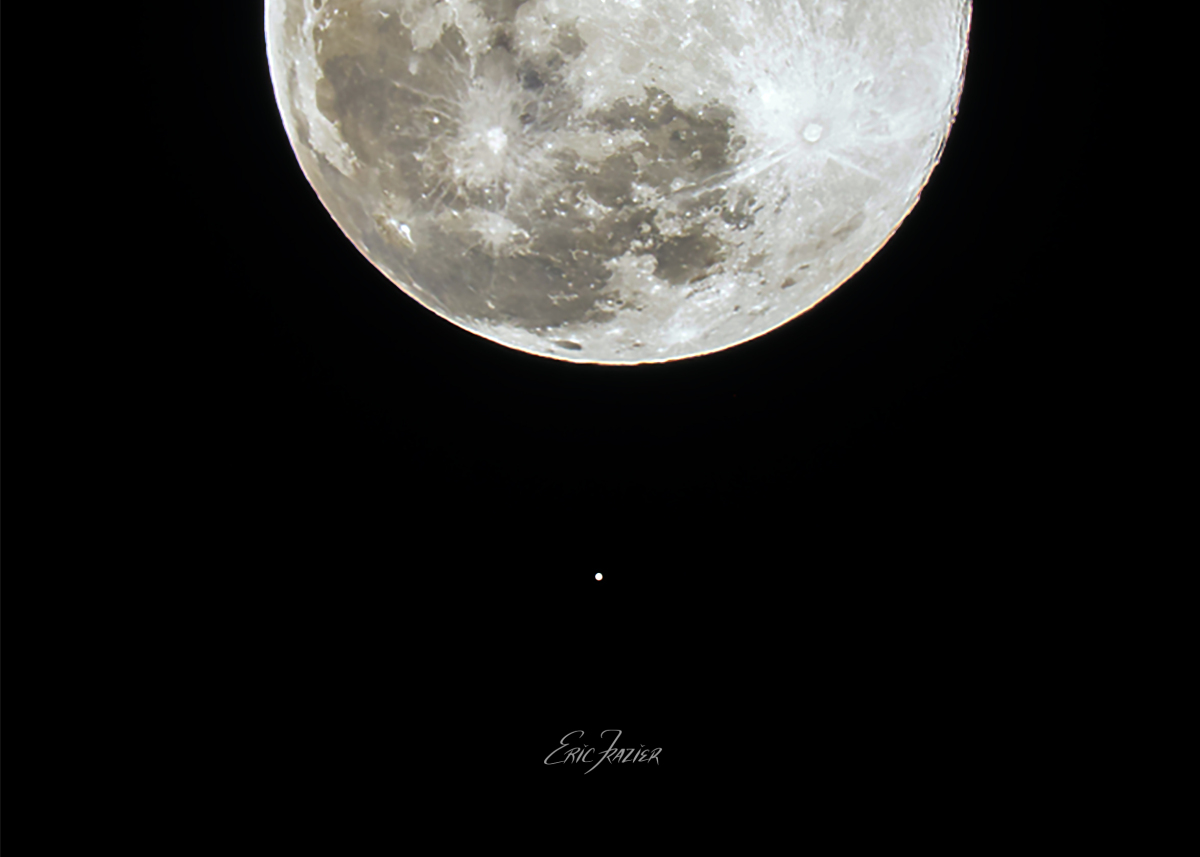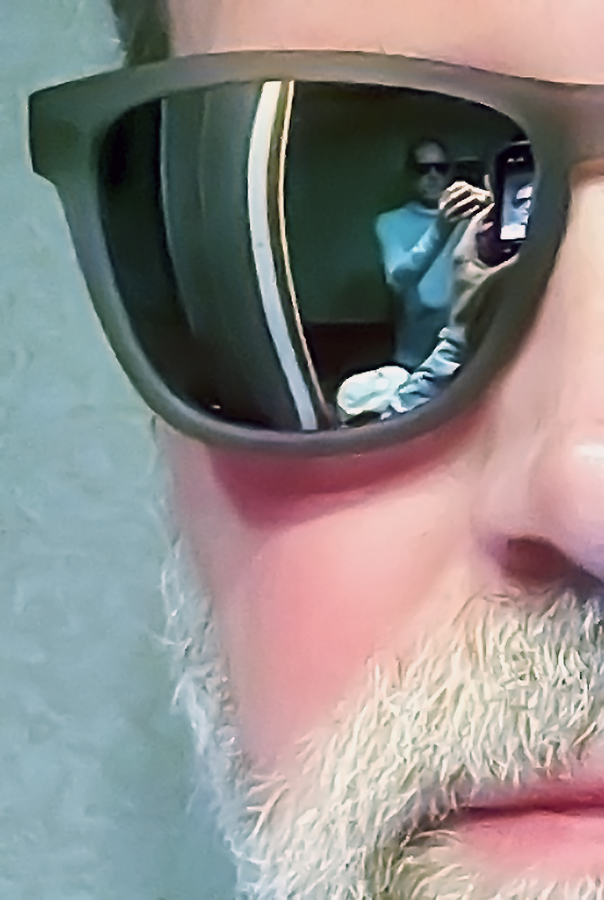On January 13, 2025, after 9 pm on the U.S. east coast, Mars appeared to pass behind the full moon, also known as the “Wolf Moon.” Astronomers call this type of event an “occultation.” Easy to see why headlines more commonly say that the moon “ate” whatever body disappeared behind it, especially when it’s the Wolf Moon.
This full moon is at its farthest orbital distance from earth, making it a “micromoon”—the opposite of a “supermoon,” a difference of about 14% in size. Still, it’s 40,000 times brighter than Mars and dwarfs the red planet, roughly 60 million miles from earth. The contrast in brightness can make for a challenging photo.

For this shot, I used a tripod and my longest lens, plus a 2x extender. I experimented with speeds and apertures, trying to get the most of Mars’ light into the camera without blowing out the moon so much that I could not darken it during editing. An alternative would be properly exposing the moon in one shot and stacking it on a longer exposure of Mars. For this one, I wanted to see what I could do with a single shot, relying on customary lightening, darkening and sharpening techniques.
A Rarity
You can see this astronomical spectacle only about once every 14 years at any given point on earth. Clouds obviously may affect the view. During the 10 minutes I spent capturing this shot, clouds occasionally blocked Mars entirely. And while I got both heavenly bodies in focus, my photo does not capture how bright Mars appeared to my eyes–like a tiny orange laser pointer.
The gap between what human eyes/brains see and what digital cameras capture can appear large at times and nonexistent at others. So far, I have made only one unfiltered solar eclipse photo that comes close to the memories of totality emblazoned in my mind’s eye.
For the next 14 years, I will keep in mind a vivid memory of that orange laser pointer swerving into the oncoming headlight that was the January 2025 Wolf Full Moon.



